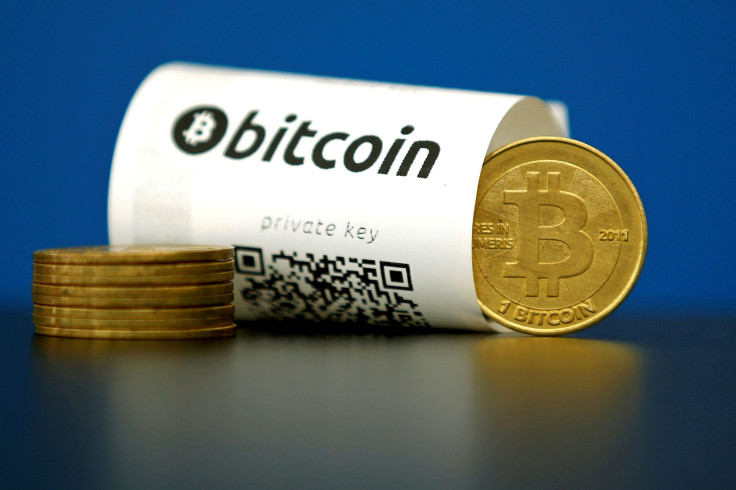Why The Bitcoin Fork Debate On August 1st Isn't 'Civil War'

It’s the week before the bitcoin community’s blockchain Super Bowl, the network fork on August 1 that will create a new bitcoin blockchain network called Bitcoin Cash. Tensions are high and taunting memes abound on Twitter as longtime bitcoin fans are choosing sides. This seismic split could arguably be one of the biggest technological divides in the history of cryptocurrency.
Here’s why a football championship is a better analogy than the “civil war ” rhetoric splashing across headlines: Bitcoin Cash, abbreviated as both BCC and BHC (we’ll use just BCC for clarity here), won’t overthrow Bitcoin core (BTC). Nor do BTC supporters have any interest in killing BCC. Disagree with it? Sure. Slay BCC and force it back into the fold? That’s not really bitcoin lovers’ style. Here’s what’s really going on.

Bitcoin’s network will be updated over the next few months, regardless of the fork. Developers have been hard at work for months preparing for a roadmap to scaling called Segregated Witness, which will boost network speed and capacity. Blockchain enthusiasts are already testing the next step after SegWit, called Lightning. Right now, the bitcoin network can only handle a few transactions per second. When SegWit is implemented, the capacity will almost double. Once Lightning enters the game, the network could theoretically handle millions of transactions per second.
On the other hand, BCC supporters are taking SegWit out and using other tools for an immediate boost, up to a few dozen transactions per second. There are other technological changes BCC represents as well, which will influence the cost of transactions and mining among other factors. The underlying result is a slightly faster network right now instead of waiting for ongoing improvements throughout the year. Since bitcoin is run by an open source community, BCC supporters could always copy more efficient code down the line if Lightning proves to be a game-changer.
Bitcoin traditionalists and BCC supporters, who are predominantly Asian miners and investors according to the New York Times, both want a faster network with more scalability in 2018. “At the end of the day, both major camps want the same thing,” BitGo engineer Jameson Lopp told International Business Times. “They want as many people in the world to use bitcoin as much as possible, in order to have a new system that is outside of the control of any single entities. But we just differ on the vision, in the short term, on how to get there.”
Many blockchain industry influencers, including leading cryptocurrency wallets and exchange markets like Coinbase, are treating BCC like an alternative coin. The site is even temporarily suspending bitcoin activity on August 1 to protect customers from the frenzy. Adam White, general manager of Coinbase Inc.'s GDAX market, told IBT Coinbase now has around 8 million users. A huge chunk of those users are bitcoin newbies, as the ongoing cryptocurrency boom draws more media attention and curious new users to the table. The market is full of alt coins such as Litecoin, which are remarkably similar to core bitcoins. So there is some precedent for comparable networks operating side-by-side. "We've seen this happen before," White said. "There's just more people being effected."
Read : Bitcoin Prices Surge, Here's Why Cryptocurrency Is Skyrocketing
When bitcoin miners involved with communities like the Hong Kong-based currency exchange Bitfinex split to create their own network tokens next week, there will certainly be rowdy crowds of onlookers, tons of market volatility and even a few dramatic twists. Then, when all is said and done, the blockchain league will continue on. This is just the first of many rival developments the bitcoin community will have as the technology matures.
"I Really Hate The Term Civil War"
After the fork on Aug. 1, older bitcoin investments won’t lose all their functionality like Confederate paper currency once did. Going forward, both versions of bitcoin will be just like different currencies. “I really hate the term civil war,” Lopp told IBT. “It [bitcoin] really is the perfect voluntary system...it’s actually designed for you to peacefully secede by forking off and creating your own new protocol rules.”
Some sly users holding old bitcoin on their own hardware wallets might even be able to multiply their tokens to work on both networks, although that doesn’t mean they’ll double their money. The market value of these tokens after the split, both BCC and BTC, still remains to be seen. “Over the next several months we have several other potential forks that may or may not happen,” Lopp said. “Related to Bitcoin Unlimited and related to SegWit2X, so it’s going to continue to be a very interesting time.”
The Economist reported the internet faced similar conflicts over core technology functions in decades past. Key players created institutions like the Internet Engineering Task Force to overcome ideological challenges. Even though the bitcoin community has nonprofit groups like the Coin Center and the Bitcoin Foundation, it is far more decentralized than the tech industry. Anarchy still reigns supreme in cryptocurrency circles. At it’s core, this bitcoin fork has because a political debate.

Throughout Asia, especially China, large-scale bitcoin mining has become an industrial business. According to Gizmodo, groups with more of an industrial business mentality lean towards BCC. “I actually think it would be a good thing if there is a split,” Tokyo-based investor Roger Ver told the New York Times.
Meanwhile, core developers prefer the core bitcoin network with a more cautious approach to restructuring, because they want to avoid putting small miners and individuals at a disadvantage compared to huge, well-funded players. “The scalability debate has been raging for years,” Lopp said. “The big split that has seemed to polarize more over this year is the enterprise versus the cypherpunk bitcoin.”
People who view bitcoin primarily for business want to serve as many customers as possible with the lowest transaction fees, and they want it now. On the other hand, crypto-idealists value a lower cost for running a self-validating node, aka the ability for a regular Joe to be his own sovereign network contributor. Most are willing to tolerate a slightly higher transaction fee in order to protect personal investments while working towards long term solutions like Lightning.
Who Comes Out The Winner: Will The Split Reduce BTC Momentum?
Profit isn't the only motivation driving bitcoin separatists. "Neither one is right or wrong," White said. "In the future, several years down the line, we see a world in which there's many different digital assets." Some people think the best way to encourage widespread bitcoin adoption is through enabling more users as fast as possible.
Others are against the split because it could reduce the momentum of BTC if many large-scale miners and well-funded participants switch sides. They want to prioritize bitcoin's store of value. This conflict reveals the core concept that differentiates blockchain technology: It runs on participation, not votes or forcible decrees. “It’s a completely new system of governance,” Lopp said.
No matter what happens in August, this is only the beginning. "This hasn't been the first time," White said. "And this won't be the last time." The upcoming fork is not a winner-take-all situation. It’s a more like a historic football game that will have a wider impact on the community’s overall legacy. Bitcoin is the reigning champion, and every season new currencies will put it to the test on the rough and tumble field of cryptography. “Bitcoin cannot die unless we all come to a consensus that it is dead,” Lopp said. “That’s what it is, a community project. As long as there are some mass of people who continue to work on it, it’s going to exist and be improved.”
© Copyright IBTimes 2024. All rights reserved.





















